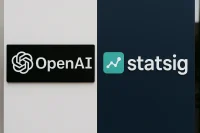Introduction
In a world obsessed with hustle and constant busyness, many of us find ourselves overwhelmed, exhausted, and unfulfilled. Cal Newport, a renowned productivity expert, proposes a radical alternative: slow productivity. This approach is about doing fewer things, but doing them better, and living a more meaningful life. In this post, we’ll explore Newport’s slow productivity principles, the epidemic of busyness, the dangers of pseudo-productivity, practical time blocking strategies, and how to build a deeper, more satisfying life.
The Busyness Epidemic
Modern work culture glorifies being busy. We fill our calendars with meetings, tasks, and endless to-do lists, often mistaking activity for accomplishment. This busyness epidemic leads to stress, burnout, and a sense that we’re always behind.
- Constant notifications and interruptions
- Multitasking instead of deep work
- Lack of boundaries between work and life
Pseudo-Productivity: The Trap of Looking Busy
Pseudo-productivity is the illusion of progress. It’s when we spend hours on low-value tasks, emails, and meetings that don’t move us closer to our goals. Newport warns that this trap keeps us from meaningful work and personal growth.
Signs of Pseudo-Productivity
- Checking email constantly
- Attending meetings without clear outcomes
- Focusing on urgent but unimportant tasks
Cal Newport’s Slow Productivity Principles
- Do Fewer Things: Ruthlessly prioritize. Focus on a small number of high-impact projects.
- Work at a Natural Pace: Avoid overloading your schedule. Allow time for deep thinking and creativity.
- Obsess Over Quality: Strive for excellence in your chosen tasks, rather than spreading yourself thin.
Time Blocking: A Practical Tool
Time blocking is a core technique in slow productivity. It involves scheduling specific blocks of time for focused work, rest, and reflection. This helps you avoid distractions and ensures you’re working on what matters most.
How to Time Block
- Identify your most important tasks for the day.
- Assign dedicated time slots for each task.
- Include breaks and buffer time to avoid burnout.
- Review and adjust your schedule as needed.
Building a Deeper Life
Slow productivity isn’t just about work—it’s about living a richer, more intentional life. By focusing on what truly matters, you can cultivate deeper relationships, pursue meaningful hobbies, and experience greater satisfaction.
Live Example: Applying Slow Productivity
Case Study: Sarah, a marketing manager, was overwhelmed by endless emails and meetings. By adopting slow productivity, she:
- Reduced her project list from 10 to 3 key initiatives
- Scheduled daily time blocks for deep work
- Set boundaries for after-hours communication
- Reported higher job satisfaction and better results
Ready to Find a Job That Values Meaningful Work?
Stop chasing busyness and start building a career that truly matters. Explore thousands of opportunities on WhatJobs and take the first step toward a more fulfilling future.
Search Jobs Now →FAQ
What is slow productivity?
It’s a philosophy that emphasizes doing fewer things, working at a sustainable pace, and focusing on quality over quantity.
How can I avoid pseudo-productivity?
Prioritize high-impact tasks, minimize distractions, and regularly review your activities for real value.
Is time blocking effective for everyone?
While it may require adjustment, most people benefit from structured time for focused work and rest.
Can slow productivity help with burnout?
Yes, by reducing overload and focusing on meaningful work, slow productivity can help prevent and recover from burnout.




